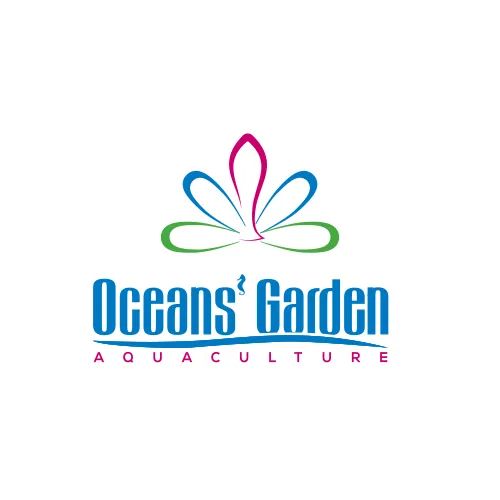4-Wheel Drive Goby (Signigobius biocellatus): A Complete Guide to Care, Feeding and Tank Compatibility
Saltwater aquarium enthusiasts seeking to add a touch of captivating beauty and intrigue to their aquatic realm need to look no further than the remarkable 4-Wheel Drive Goby (Signigobius biocellatus). This species is a true masterpiece of the underwater world with its distinct appearance, fascinating behaviors, and unique interactions with tank mates. In this guide, we will explore every facet of the 4-Wheel Drive Goby's care, feeding requirements, and tank compatibility.
Table of Contents
- Quick Overview of the 4-Wheel Drive Goby
- Appearance
- Habitat and Behavior
- Diet
- Tank Size Recommendations
- Care Recommendations
- Tank Mates: 8 Most Popular at Saltwaterfish.com
- Symbiotic Relationship
- Keeping Two Gobies Together
- Conclusion
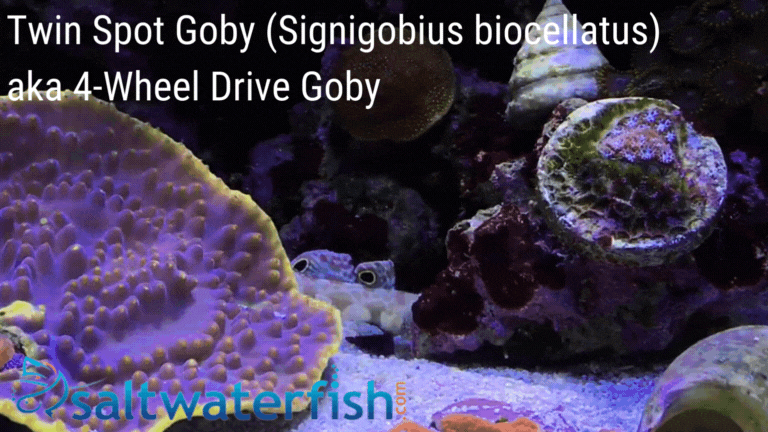
Twin Spot Goby aka 4-Wheel Drive sifting sand in a saltwater reef aquarium with corals.
Quick Overview of the 4-Wheel Drive Goby
The Twin Spot Goby, aka 4-Wheel Drive Goby, scientifically known as Signigobius biocellatus, is a popular species among aquarium enthusiasts. Here is a quick fact summary about this fish:
- Common Names: Apart from 4-Wheel Drive, it is also commonly called the Signal Goby, Two-spot Goby, and Twinspot Goby.
- Appearance: It has a distinct appearance with two large dark spots on its white body resembling eyes. These "false eyes" are thought to confuse predators.
- Size: The Twin Spot Goby typically grows to about 3 inches (7.6 cm).
- Habitat: This goby is found in the Western Pacific region, particularly in the waters of Northern Australia, the Philippines, and Indonesia.
- Diet: They are bottom-dwelling carnivores feeding on small crustaceans and zooplankton.
- Behavior: They are known to burrow in the sand and are often seen perching near their burrows. They use their large pectoral fins to "walk" along the substrate.
- Reef Safe: The Twin Spot Goby is considered reef safe. They generally do not harm corals or other invertebrates in the reef aquarium. However, they do tend to sift through the sand substrate, which can sometimes disturb the base of certain corals or other sessile invertebrates. As such, aquarists should monitor their behavior while they are compatible with most reef setups to ensure they are not causing unintended disturbances.
- Aquarium Care: In captivity, they require a fine sandy substrate to burrow in and plenty of hiding spaces. They are generally peaceful and can be kept in a community tank with other non-aggressive fish.
- Reproduction: Twin Spot Gobies form monogamous pairs, and both parents participate in guarding the eggs.
- Lifespan: They can live for several years in captivity with proper care.
This species is admired for its unique appearance and quirky "walking" behavior, making it a favorite among many saltwater aquarium hobbyists. If considering keeping them, providing them with an appropriate environment mimicking their natural habitat is essential. Now let us go into more details.
Appearance: An Extraordinary Marvel
The 4-Wheel Drive Goby boasts an extraordinary appearance that sets it apart as a gem in the marine world. Its dorsal fin showcases two prominent "eyes," a clever defense mechanism against potential predators. Its anal fin, adorned with mesmerizing blue spots against a black background, creates a captivating visual contrast. However, the standout feature that earned it the nickname "4-Wheel Drive Goby" is its ventral and anal fins, resembling four black tires. This remarkable mimicry not only adds to its visual appeal but also offers a glimpse into the intricate defense strategies of marine life.
Habitat and Behavior: Insights into a Hidden World
Native to the Indo-Pacific region, the 4-Wheel Drive Goby thrives in shallow coastal waters, lagoons, and protected reef areas. Its affinity for sandy substrates is remarkable and intriguing, as it skillfully constructs burrows to ensure its safety and security. This peaceful and reef-safe species coexists harmoniously with a range of tank mates, making it a fitting choice for aquarists of all levels. Witnessing its natural burrowing behavior within an aquarium setting, complete with fine sand substrate, offers a captivating glimpse into the goby's distinctive personality.
Diet: Fueling Vibrancy and Vitality
Maintaining the vibrant health of the 4-Wheel Drive Goby requires a diverse and nutrient-rich diet. While enriched brine and mysis shrimp are essential staples, adding chopped frozen seafood such as krill and plankton ensures a stimulating culinary experience. These gobies thrive on a diet of small crustaceans, zooplankton, and tiny invertebrates in their natural habitat, underscoring their critical role in maintaining the marine ecosystem's delicate balance.
Small Aquarium? Tank Size Recommendations
An aquarium of at least 20 gallons is recommended. This size ensures adequate space for the goby to burrow and exhibit natural behaviors while offering a buffer against rapid water parameter changes; if considering adding more gobies or other species, especially other bottom-dwellers, opting for a larger tank would prevent territorial disputes and overcrowding.
Care Recommendations: Nurturing a Jewel of the Ocean
To create an optimal environment for the well-being of the 4-Wheel Drive Goby, it is essential to adhere to the following care recommendations:
- Substrate Selection: Provide a sandy substrate that allows the goby to exhibit its natural burrowing behavior; this not only mimics its native habitat but also offers a source of enrichment and security.
- Diet Diversity: Prioritize a diverse diet encompassing enriched brine and mysis shrimp, chopped frozen seafood, and high-quality marine foods. This dietary variety ensures the goby's overall health and longevity.
- Tank Parameters: Foster a stress-free environment by establishing proper filtration, conducting regular water changes, and vigilantly monitoring ammonia, nitrite, and nitrate levels. Consistency in water quality is vital for their well-being.
- Tank Mates: Curate a harmonious community by selecting tank mates that align with the 4-Wheel Drive Goby's peaceful nature. Choose small wrasses, clownfish, blennies, and other non-aggressive gobies to ensure compatibility.
Tank Mates: 8 Most Popular at Saltwaterfish.com
-
Pistol Shrimp (Alpheus spp.)
- Description: Recognized for their asymmetrical claws, the larger can produce a loud snapping sound. They come in various colors and patterns.
- Reason: The relationship between gobies and pistol shrimp is a celebrated symbiotic pairing in marine tanks. While the Twin Spot Goby is not the most common goby to pair with pistol shrimp, they often coexist peacefully.
-
Six Line Wrasse (Pseudocheilinus hexataenia)
- Description: This small, colorful wrasse has six horizontal blue lines across its body against a bright orange background.
- Reason: These wrasses are active and can help control pests in the tank. They are generally peaceful and occupy the mid to top regions of the tank, minimizing territorial disputes with bottom-dwellers like the Twin Spot Goby.
-
Green Chromis (Chromis viridis)
- Description: A small, peaceful, and brightly colored damselfish that often swims in schools.
- Reason: Green Chromis are peaceful fish that stick to the mid to upper regions of the tank. Their schooling behavior adds dynamic movement to the aquarium without threatening the Twin Spot Goby.
- Cardinalfish (e.g., Pterapogon kauderni aka Banggai Cardinalfish)
- Description: Description: These are peaceful, slow-moving fish with elongated bodies and striking patterns.
- Reason: Cardinalfish are peaceful and compatible with the Twin Spot Goby. They often stick to the lower and mid-regions of the tank but do not interfere with the goby's territory.
- Description: Description: These are peaceful, slow-moving fish with elongated bodies and striking patterns.
-
Soft Corals (e.g., Zoanthids, Mushrooms)
- Description: Soft corals are flexible, often vibrant, and can have a variety of shapes and textures. Zoanthids are particularly colorful, while mushroom corals are known for their disk-like appearance.
- Reason: Twin Spot Gobies are reef-safe and will not harm soft corals. Having corals in the tank provides additional hiding spots and contributes to a more natural environment for the goby.
- Powder Blue Tang (Acanthurus leucosternon)
- Description: A vibrant blue fish with a characteristic "powder blue" coloration, a popular tang fish in saltwater aquariums.
- Reason: The Powder Blue Tang's active swimming nature complements the bottom-dwelling behavior of the 4-Wheel Drive Goby. Their vibrant coloration adds a dynamic contrast to the aquarium, and their presence in the upper regions of the tank ensures they don't intrude on the goby's territory.
- Description: A vibrant blue fish with a characteristic "powder blue" coloration, a popular tang fish in saltwater aquariums.
- Bubble Tip Anemone (Entacmaea quadricolor)
- Description: A marine invertebrate with tentacles that resemble bubbles. They come in various colors, including green, rose, and red.
- Reason: Bubble Tip Anemones add a splash of color and movement to the tank. Their stationary nature means they won't disturb the 4-Wheel Drive Goby's burrowing activities. Additionally, the goby's peaceful demeanor ensures it won't bother the anemone, making them compatible tankmates.
- Description: A marine invertebrate with tentacles that resemble bubbles. They come in various colors, including green, rose, and red.
-
Nassarius Snails
- Description: Small scavenger snails known for their ability to burrow in the substrate and clean detritus.
- Reason: Nassarius Snails are excellent partners for the 4-Wheel Drive Goby. Their burrowing behavior complements the goby's own substrate activities. They help maintain a clean tank environment by consuming detritus, ensuring a healthier habitat for all inhabitants, including the goby.
- Description: Small scavenger snails known for their ability to burrow in the substrate and clean detritus.
Randall Pistol Shrimp
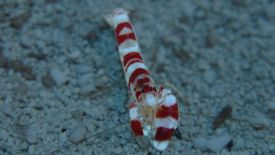
Six Line Wrasse
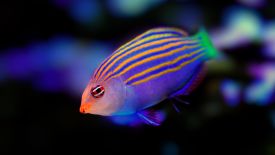
Green Chromis
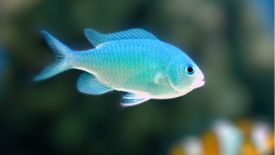
Banggai Cardinal
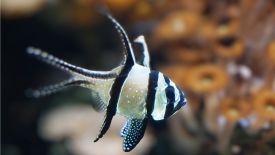
Zoanthid
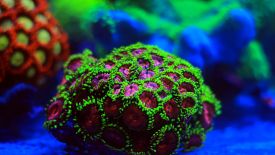
Powder Blue Tang
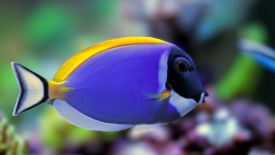
Bubble Tip Anemone
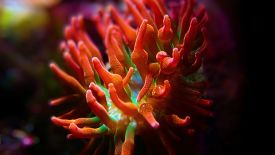
Nassarius Snails
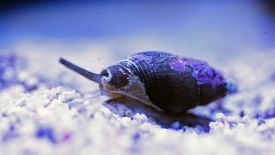
Symbiotic Relationship: The 4-Wheel Drive Goby and Pistol Shrimp Duo
Among the most captivating phenomena in marine ecosystems is the symbiotic relationship between the 4-Wheel Drive Goby and the pistol shrimp. The goby serves as a vigilant sentinel, alerting the shrimp to potential threats with its keen eyesight. In turn, the shrimp's excavating talents create a safe burrow for both creatures to inhabit. This partnership highlights marine life's intricate interdependence and offers a visually mesmerizing spectacle within the aquarium.
Keeping Two Gobies Together: A Balancing Act
The decision to keep two 4-Wheel Drive Gobies together requires careful consideration. While generally peaceful, these gobies can exhibit territorial behaviors toward their species. Providing ample space and hiding spots within the aquarium can help mitigate potential conflicts. However, outcomes can vary based on individual temperaments, tank size, and the availability of suitable territories. Careful observation and potential rehoming of one goby may be necessary to prevent aggression.
Conclusion
Elevate your aquarium to new heights with the captivating 4-Wheel Drive Goby. Its unique appearance and peaceful nature make it the perfect addition for beginners and experienced hobbyists. Create a harmonious underwater haven as you watch this remarkable goby thrive alongside its tank mates. Do not miss the chance to bring the ocean's wonders into your home – get your 4-Wheel Drive Goby today and experience the magic for yourself!


